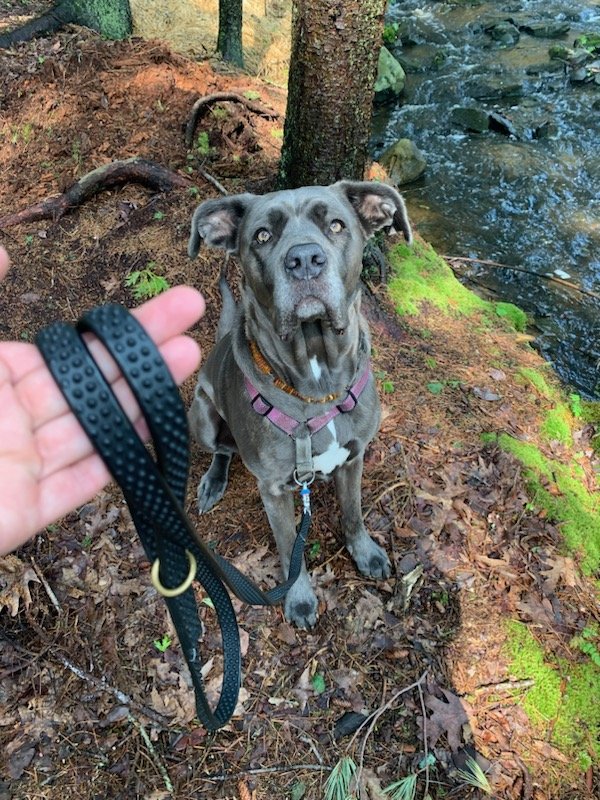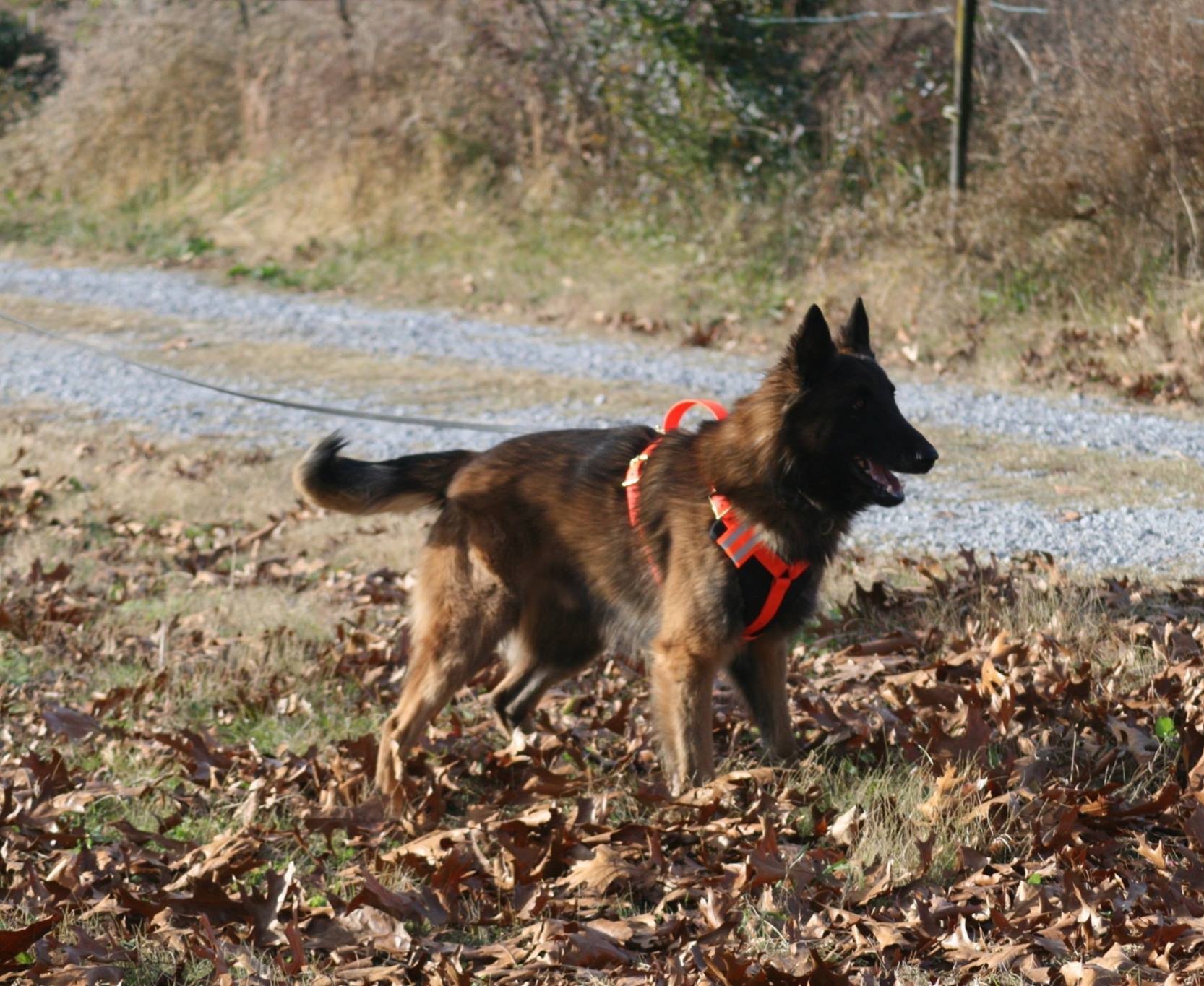The Very Best in Biothane
What is Biothane?
Biothane is a trademarked patented artificial material, with the feel, and, if you want, the look of leather without most of the problems associated with leather.
Biothane is strong, durable, and pliable. It comes in various widths, thicknesses, and colors. It is low maintenance (I personally like that). When it gets wet, it dries with no ill effects. If it gets muddy or pooped on or peed on, simply wash it with soap and water and wipe it dry. Want to disinfect it? Wipe it with diluted disinfectant solution, and rinse it well. Wipe it down with a paper towel or cloth towel and it should be good as new.
Biothane leads don't get snagged on the briars and brambles we have here, and they don't tend to tangle. The folks at the manufacturing plant tell be that Biothane gets brittle at -56° F. That is -49ۜ° C, and that is ridiculously COLD. If you are out with your dog in that kind of weather, you are far more dedicated than I. I tend grumble when we get a call-out in the +20° range.
Biothane is also a very strong product. The pull strength is rated at 1000 pounds per inch of width. It is important to note that all of the strength is in the core of the material. This super-strong core is surrounded by a layer of material whose job it is to protect the core from abrasion and from sunlight. Both of these will degrade and weaken material.
Of course, if you put a hole in it for a rivet or a snap, you weaken it by somewhat more than just the width of the hole. Sewing doesn't do that which is why I sew mine. It isn't quite as pretty, but it is stronger. When the safety of my dog is at stake, I'll trade a lot of "pretty" for more strength and security.
When it comes to sewing, the thread type used is also important. The best thread that I am aware of (from a resistance to sunlight degradation standpoint) is Teflon. Most thread will degrade in sunlight after a few months or at most a few years. Teflon thread is rated for at least 20 – 30 years. The downside of Teflon thread is that it costs about 100 times as much as dacron or nylon. Fortunately for me the thread cost for Teflon thread is manageable.



Thickness
Heavyweight is thick. It is about 1/6 of an inch in thickness. I find that it is much more comfortable to grip than lightweight. Yes, it is a bit heavier, but for the difference in comfort, I think that it is worth the small penalty in weight.
Lightweight is thin. It is about 1/10 of an inch in thickness. In the ⅝ and ½ inch widths, I find that it is a bit more tiring to grip than the heavyweight.
Width
⅜” Lightweight for dogs under 20 lbs.
½” Lightweight for dogs 15 lbs. - 30 lbs.
½” Heavyweight for dogs 20 lbs. - 40 lbs.
⅝” Lightweight for dogs 30 lbs. - 55 lbs.
⅝” Heavyweight for dogs 45 lbs. - 100 lbs.
¾” Heavyweight for dogs 75+ lbs. or with pulling issues
Colors
Colors are listed with each of the product options. Black and brown Biothane looks like leather, and at first they were the long line color of choice for me. I find that I like the high visibility of the bright orange or bright yellow stuff. A brown or black line is too easy to lose in tall grass or woods.
What is SuperGrip?
SuperGrip is a bumpy kind of Biothane. It is thicker and has a somewhat rubbery feel. It gives a much improved grip (hence the name). In this product I have only black and occasionally brown.
If you are doing IPO work, or if you have a big dog who pulls hard, or if you have a compromised hand grip, you might consider SuperGrip. Due to its weight, I do not recommend a length of more than 15 feet (~5 m). If your trails are mostly in woods or brush, I would steer clear of SuperGrip. It does not slide easily around the trees and you will spend more time untangling your line than trailing your dog. The price for this product is somewhat more than regular Biothane.



